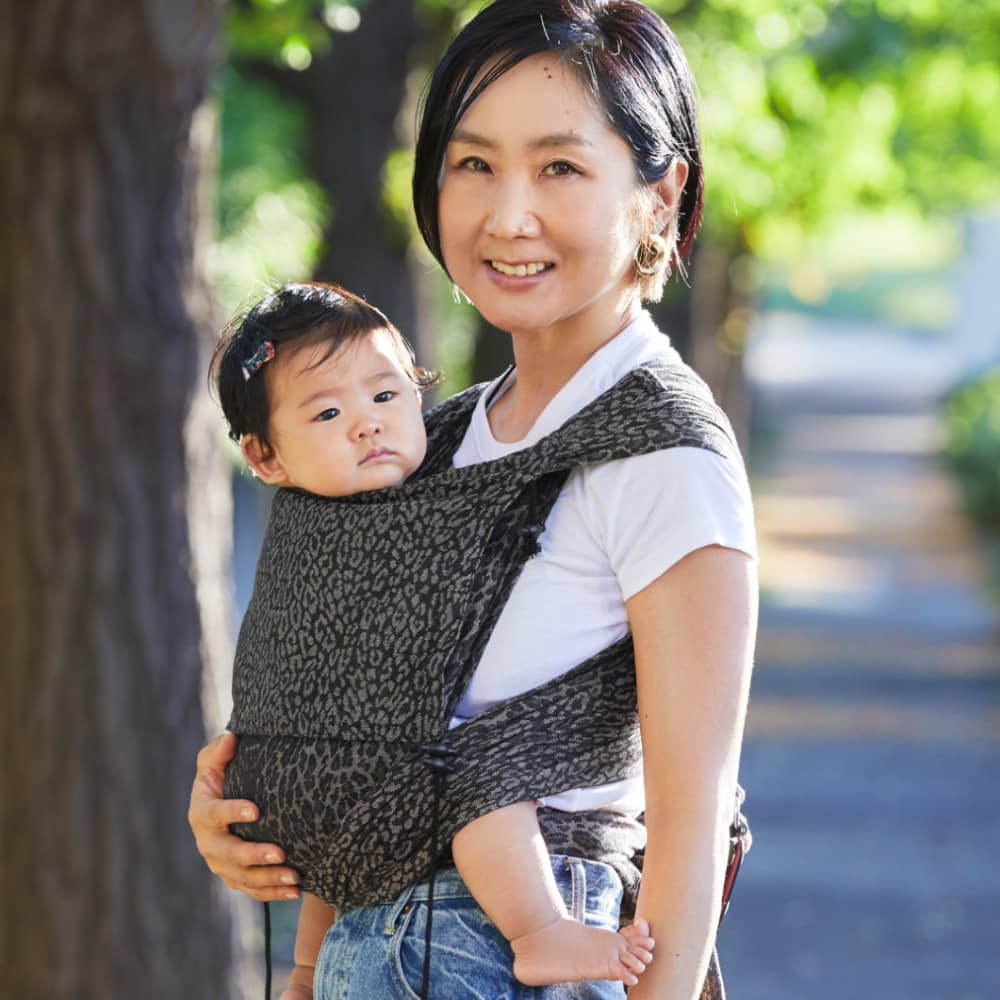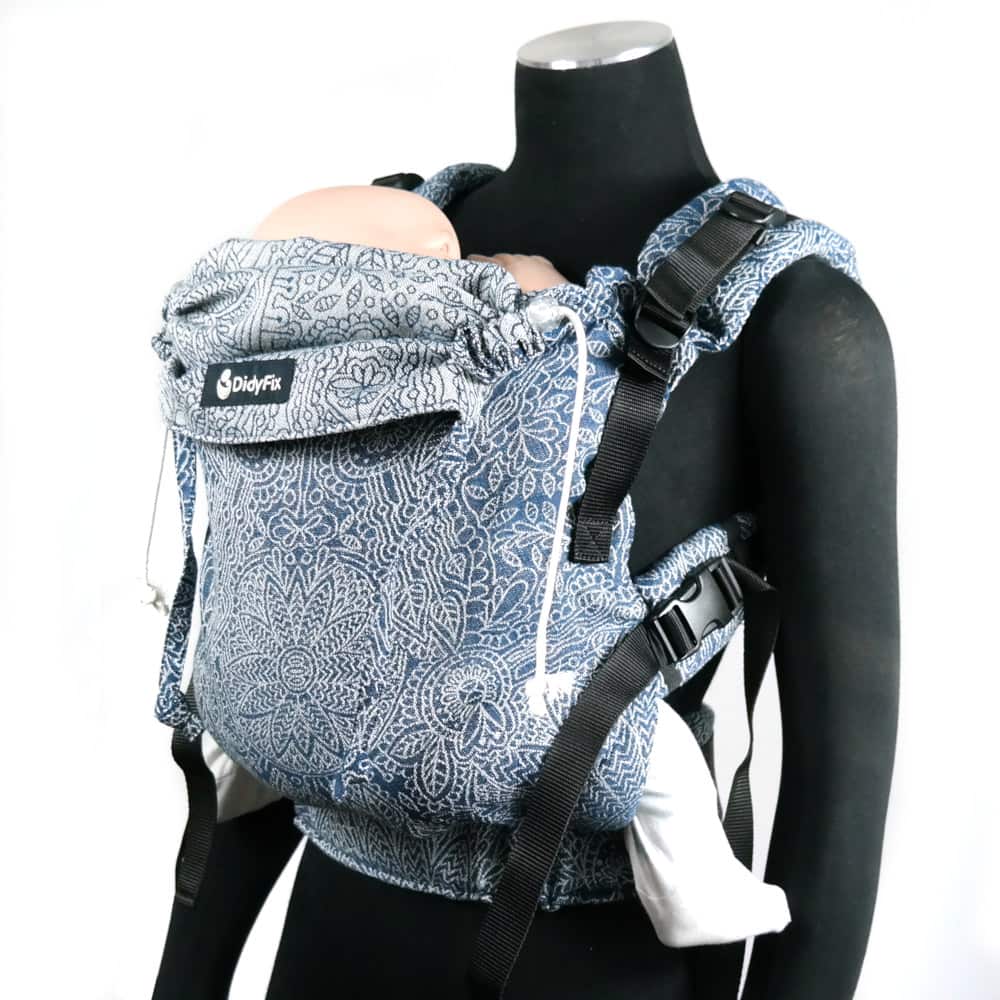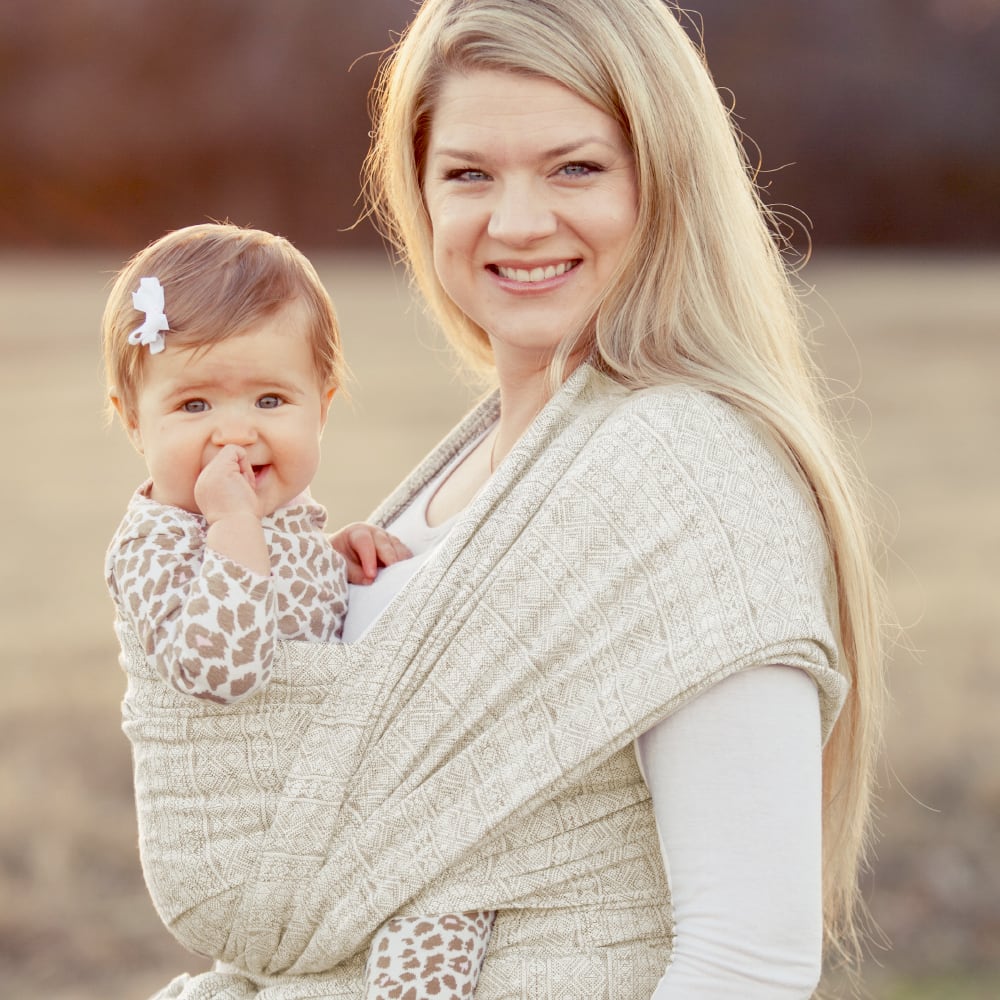
Carrying your baby has multiple benefits, if you know how to do it. Below we will describe those reasons and provide you with tips on how best to carry your baby.
You can find some tying methods for your wrap here,
and a table comparing carriers here.
We have a pdf outlining the basics of carrying, in English or Icelandic.
BENEFITS IN GENERAL
More bonding and secure attachment
Being close to your child will help you and your baby to bond and feel safe in this new and unknown world.
Stimulate milk production
Being close to your baby can also increase how much oxytocin your body creates. Oxytocin is one of the hormones that regulates breastfeeding.
Better regulation of body temperature and circadian rythm
Your body amazingly automatically adjusts its temperature to regulate your baby’s temperature. So when your child is cold or has a fever, carrying the baby can help the situation. Additionally, by being upright during the daytime, carrying your baby can help with establishing a day- and night-pattern.
Reduction of crying
By being so close and providing comfort your baby could cry less or less long. Your baby will feel more secure and knows that there is someone looking out for him or her.
BENEFITS FOR THE PARENT
Free Hands
Compared to carrying your child with your arms, or handling a stroller, having your child in a wrap or carry bag means your hands are free! this way you can be sure that your child is safe and can go about to do your business!
Freedom of Movement
You will not be limited by the route you are taking compared to handling a stroller; you can just walk up and down stairs, manoeuvre through narrow aisles in a shop, or walk outside in the snow. If you are worried about the cold, just have a look at our carry jackets from Mamalila to keep you and your child warm.
Flexibility in use
Carry bags and wraps are relatively small ‘devices’ to carry your child. This way, it is easy to take it with you if you are not sure what you will be doing when going outside with your child. Are you planning to walk around the block with your toddler, but halfway through your toddler says no? Just put on that carrier and go! Or are you visiting a friend by car, and then decide to go for a walk? Just put your child in the carrier, put on your carry jacket and go! This also works well when travelling, so there is no need to always fold, lift, and unfold the stroller.
Be more aware of your child´s state
Because you are so close to your child, you will know if it is sleeping, awake, or needs anything else. You will unconsciously learn how your child responds to certain events in the environment, and help your child cope with it.
Bag or wrap?
Babies and kids are never too young or old to be carried, you just need to make sure you are using the right carrier in the right way.
What carrier should I use?

Carry bags
Upsides
Carry bags are generally speaking easier to use, because you do not need to tie anything. Instead, buckles make sure that the bag is secured and fitted to size. Carry bags are therefore also quicker to put on, and are more predictable in how they will feel (you will understand this once you have tried both a bag and a wrap). For bags, the size of your baby matters; usually they are safe for use from around 3,5 kilos, until 16 or 23 kilos. These weights are always mentioned in the description of the carry bags. Another measure is the width from knee-pit to knee-pit, as your baby’s legs should be well supported for optimal development of the hips. Then there are also carry bags for toddlers, and older kids.
Downsides
A downside of a carry bag is therefore that you might need to buy another bag, if your child is too small or too big for the one you have. Also, the buckles need to be adjusted with the weight of the child, and if the bag is used by more than one carrier and they differ in size. This will increase the time necessary to put on the bag.
Variations & Types
Carry bags vary depending on brand, and type. Some have padding, some have only buckles (full-buckle) or need some tying (half-buckle or mei-tai), some can be worn back and front, some also on the side as a hip rest.
True ergonomic carriers cannot be worn on front with the baby’s face directed outward. The baby should always face towards the person using the carrier to ensure the best position for the hips. Additionally, the child will feel more secure and will not be overloaded by the environment, especially when the baby is still very young. This is why we do not sell for example Baby-Björn or Ergobaby carriers.
Quick guide
Think about how you plan to use the carry bag before deciding on what type you want:
Do you want to be able to put it on as quickly as possible?
Go for one with only buckles or a ring sling.
Do you want one that is super small when folded to take on the way?
Go for one without padding.
Do you want to use it for different moments in different ways?
Go for one that has more options to adjust, such as a half-buckle or mei-tai, or consider a wrap.

Wraps
Upsides
Wraps are incredibly flexible, as they can be tied in different ways and are not related to size in the same way as carry bags are. As long as the wrap can be tied with your child in it, there is no size limit. Depending on preferences and the size of your child, you can carry in different ways to always find a good way to wrap your child.
You can carry your newborn baby or four year old on the front, on the back, on the side, use it as a blanket, or even use the wrap as a swing when hung on double rings.
Downsides
You will have to tie the wrap almost every time you use it which takes time, and there is a bit of a learning curve. Having said that, if you share a carry bag with someone else and for differently sized children, you would also have to adjust the buckles.
It does take a bit of time to get used to tying the wrap, but as with everything else you need to learn, it gets easier with practice.
Variations & Types
Wraps vary in material and length. The most important difference in material is whether they are stretchy or not. Stretchy wraps can more comfortable to wear and work for smaller babies, but are worse for older children as they cannot support their weight as well. Non-stretchy wraps also come in a lot of different combinations of material (for example cotton, linnen, hemp, or combinations of different materials), but those differences are small compared to stretch or non-stretch. They can also vary in how the fabric is woven, which affects how they ‘stretch’ or fit around you and your child.
The variation in length matters only for the type of tying you use (how much fabric is needed to go around you and your child for a certain tying technique) and how big/tall you are, in combination with your child. For most variations, a size 6 works fine. If you are set on a specific type of tying that uses less fabric, you could go for a shorter wrap, if you are a a bigger person, or want to have more options, you could go for a longer size (7 or 8).
Quick guide
Think about how you want to use the wrap before deciding on what type you want:
Do you want to use it beyond the newborn phase ?
Go for one that does not stretch.
Do you want one that you can use for many ways of tying?
Go for a size 6 or 7.
Do you want to be quick in carrying your child?
Have a look at the side carry method as a sling, or consider a carry bag.
